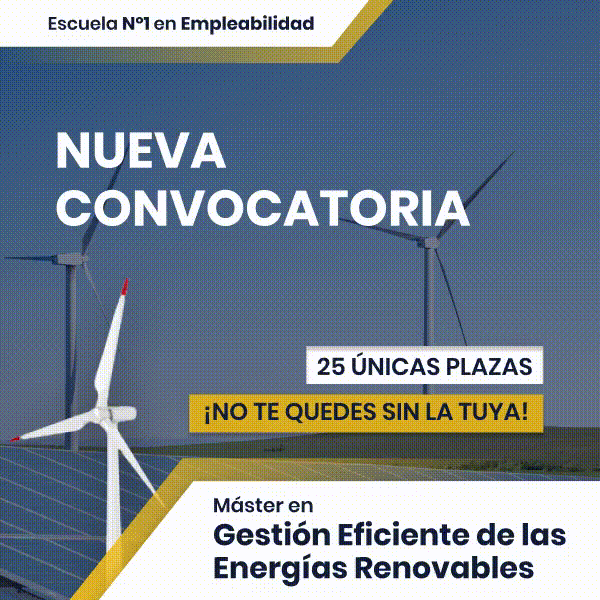Since 12/28/2019 the Royal Decree 732 2019 of December 20, by which the Technical building Code. After a voluntary application period that ended on 09/24/2020, all new works and interventions in existing buildings for which a license is requested must comply with the requirements imposed in this document.
Although some time has passed since the appearance of this new Technical Code, there are still doubts about how to justify it, what its new indicators are, the imposed limit values... but above all, there is a lack of knowledge about why the changes have been implemented and how. Buildings must change to meet these new design parameters.
Directive 2010 31 /EU on the energy efficiency of buildings, on which this new revision of the Basic Document DB HE “Energy Saving” is carried out, establishes a definition of Almost Zero Energy Consumption Building (ECCN) or Nearly Zero Building Energy (nZEB):
«Buildings that have very high energy efficiency, where the amount of energy required is close to zero and must be largely met by renewable energy sources, including energy from renewable sources produced on site or in the environment«.
According to him CTE 2019 all new buildings must comply the condition of being ECCN. This makes it clear that the technical code has changed towards more demanding conditions than those we were used to and we must understand them in order to adapt to them as best as possible.
Throughout this series of blog articles we are going to look in depth at all the aspects related to the new CTE 2019, obtaining a very complete guide on all the indicators and other justifications of this new version.
Reasons for update
As mentioned at the beginning, the CTE is a transposition of European regulations 2010 31 /EU, which among other things establishes the obligation to review and update the minimum energy efficiency requirements periodically to adapt them to technical advances in the construction sector.
The European Union is immersed in the long-term strategy for 2050, establishing a roadmap towards a low-carbon economy through the reduction of greenhouse gases (GHG), establishing the construction sector as one of the points of improvement.
Introduction to the Technical Building Code, Basic Energy Saving Document
Once we have focused a little on the context in which we find ourselves, we are going to take a first look at the CTE DB HE 2019, which will serve as a review for those of us who have been working with this document for some time and as a first contact for those of us. to get started in this field.
Although in this topic we are going to focus on the new CTE DB HE 2019, it is necessary compare it with the previous CTE DB HE 2013, to see how it has evolved and where it is leading the way.
As main news we can stand out:
- The definition of the Almost Zero Energy Consumption Building is updated by adjusting the values of these requirements.
- The previous limitation of energy needs is replaced by a combination of a limitation of Total Primary Energy Consumption and conditions of minimum energy quality of the enclosures and architectural design.
- The use of renewable energy is promoted by reducing the previously existing limit value of Non-Renewable Primary Energy Consumption.
- The use of renewables generated in the building or its immediate surroundings is promoted; increasing the mandatory minimum renewable energy contribution to produce domestic hot water, also allowing the use of any technology without giving priority to any in particular.
- The generation of electrical energy in buildings is enhanced; extending the obligation to a greater number of them, allowing, as in the previous case, the use of any of the available technologies.
What is a nearly zero energy building?
For Spanish regulations, a building with almost zero energy consumption is a building, new or existing, that complies with the regulatory requirements established in this Basic Document “DB HE Energy Saving” regarding the limitation of energy consumption for new buildings.
In the new DB HE, the ECCN is defined as a new or existing building that meets the limit values for non-renewable primary energy consumption (Cep,nren) and total primary energy consumption (Cep,tot) for a new building.
That is, all new buildings that are built according to the DB HE 2019 they will be ECCN and so will existing buildings that meet the levels of new buildings in primary energy consumption indicators.

What tools do I have at my disposal to justify the CTE DB HE 2019?
Although this point is not exclusive to the CTE DB HE2019, for the regulatory justification of the CTE we can use different software. A common mistake is to think that its justification is only possible through the tool provided by the ministry, the HULC (Unified Lider-Calener Tool). Actually we can use any tool that follows the calculation procedure included in the DB-HE 2019 and in the recognized document Technical conditions of the procedures for the evaluation of the energy efficiency of buildings.
Among those available we have our own HULC, other tools cataloged as documents recognized as Cypetherm HE Plus, SG-Save either Ce3X and tools with a valid calculation procedure such as TeKton3D.
In addition to these supporting tools, the Ministry of Transport, Mobility and Urban Agenda together with the Eduardo Torroja Institute of Construction Sciences (IETcc-CSIC), have made two tools available to users, which, even without a regulatory nature, are useful to facilitate the justification of the CTE DB HE 2019, section HE0 and HE1; ViewerEPBD and CTE Envelope.

































